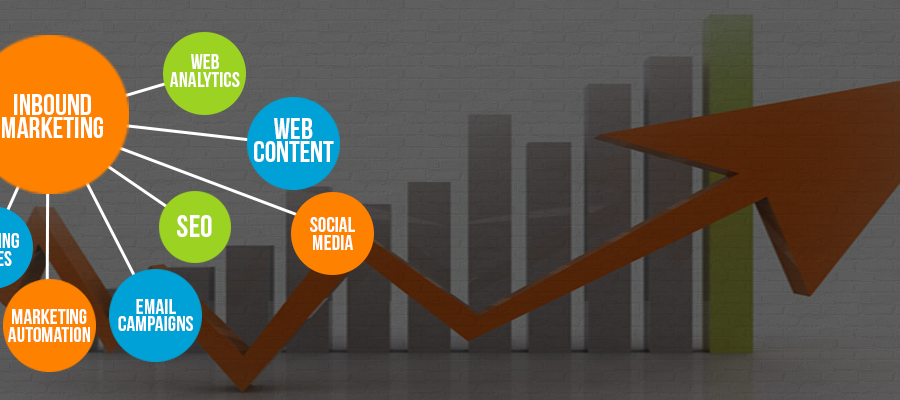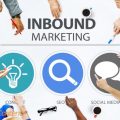Why Inbound Marketing Is Important to Your Online Business
Inbound marketing is a buzz word circulating the Internet, encouraging businesses to change their marketing tactics. In general terms, inbound marketing refers to online marketing methods that can be used to bring customers to the business without reaching out to them directly. Companies can use a variety of techniques to draw visitors into their site and convert those visitors into loyal customers.
How Is Inbound Marketing Different?
In the past, businesses had to use outbound marketing as a way to reach their customers. This type of marketing included:
Television Commercials
Billboards
Radio Ads
Magazine Ads
Direct Mail
Today, these tactics are still in use but are no longer as effective because consumer habits have changed. According to Mashable, approximately 44 percent of direct mailings are never opened, and 86 percent of television viewers skip the commercials when watching their favorite shows. With statistics like these, outbound marketing is becoming less viable because of the high cost related to creating and distributing the materials.
Inbound marketing involves many of the aspects of online marketing, including search engine optimization (SEO) and content writing. Businesses can spread the word about their business through:
Blogs
Social Media Pages
Content Creation
Pay-per-Click
Opt-in Email Lists
eBooks
Videos
Each of these strategies allows you to reach out to interested parties instead of using a blanketed marketing approach. A business must focus on creating quality web content and utilizing lead generation techniques to determine qualified leads. The more targeted the audience you reach, the better your chances of success.
The Benefits of Inbound Marketing
Whether you use SEO content writing as a primary method of reaching your customers or you choose lead generation and other methods, the benefits are the same.
Create two-way conversations between you and your potential and current customers instead of simply talking to your audience.
Draw customers to you instead of chasing them down often invasive techniques that are more likely to drive customers away.
Provide value to your audience in a way that is educational and entertaining.
The use of inbound marketing allows businesses to tailor their efforts toward interested potential customers who are more likely to convert into sales and become loyal customers. In addition, these tactics open the door to more personalization, which ensures that their needs are met through outstanding customer service.
The Process of Inbound Marketing
Businesses must use a specific process to implement inbound marketing into their business plan. While this process is more fluid than linear, a firm understanding of the basics can help you move your business forward through effective marketing.
Attract
The first step in the process is to attract prospective customers to your business. Many businesses focus on driving large amounts of traffic to their website to gauge their success. Just any traffic won’t be effective, though. You need the right traffic, built from individuals who are likely to need your products or services. Appealing to the search engines with SEO web content and other content writing that uses the right keywords is the best way to make an impact.
Blogging — A blog is one of the best ways to attract relevant visitors to your website. Individuals are turning to the Internet more than ever to find the information they require. If your blog gives them the pertinent data they crave, it will direct them to your website.
Social Media — Social media has grown into the perfect avenue for businesses to attract new customers. Use social media sites to interact personally with your customers and attract new ones with relevant content that fills their needs.
Web Content Pages — Web content pages are a critical aspect of any business site. If they aren’t appealing to potential customers or aren’t ranked higher by the search engines, they won’t generate the quality traffic you require to succeed.
Convert
After you attract the visitors to your site, it is time to convert them into satisfied customers. To do this, you need to gather their contact information so you can begin interacting with them on a personal level. If you want to make it attractive for individuals to give you their contact information, you need to offer them something valuable in return, such as a whitepaper, eBook or even a tip sheet. In order to convert visitors to customers, you need to use several important tools.
Call to Action
You need to convince your visitors that giving you their contact information will benefit them. Let them know just why they should provide you with an email address. For instance, you can encourage them to download a whitepaper, attend a webinar or visit your blog for more information.
Landing Pages — Whenever visitors click on a link in a call to action, it should take them to a specially designed landing page. This landing page should give them more information, as well as a place to submit their contact information to you.
Forms — Forms are an effective way of gathering information from prospective customers. These forms should be easy to fill out and not require more information than is absolutely necessary to be an attractive option.
Close
After you attract your audience and get them to give you more information, it is time to close the deal. These methods allow you to convert your leads into customers. Using the right marketing tools will help you close these sales and build a solid customer base.
When you have the contact information of your prospective customers, you can send them personalized emails that will appeal to their needs and show them how you can help fill those needs.
Marketing Automation
Pay close attention to what your leads are doing on your site. If they seem to be interested in one particular product or service, target any emails you send to that topic to draw them in further.
Reporting
Utilize reporting to evaluate the effectiveness of all your campaigns so you can make alterations as necessary. Learning what works and what doesn’t will help you make the right adjustments to improve efficiency.
If you use these strategies for your marketing, you are more likely to establish a customer base that will be loyal to you and help you spread the word through social media shares and other opportunities.




